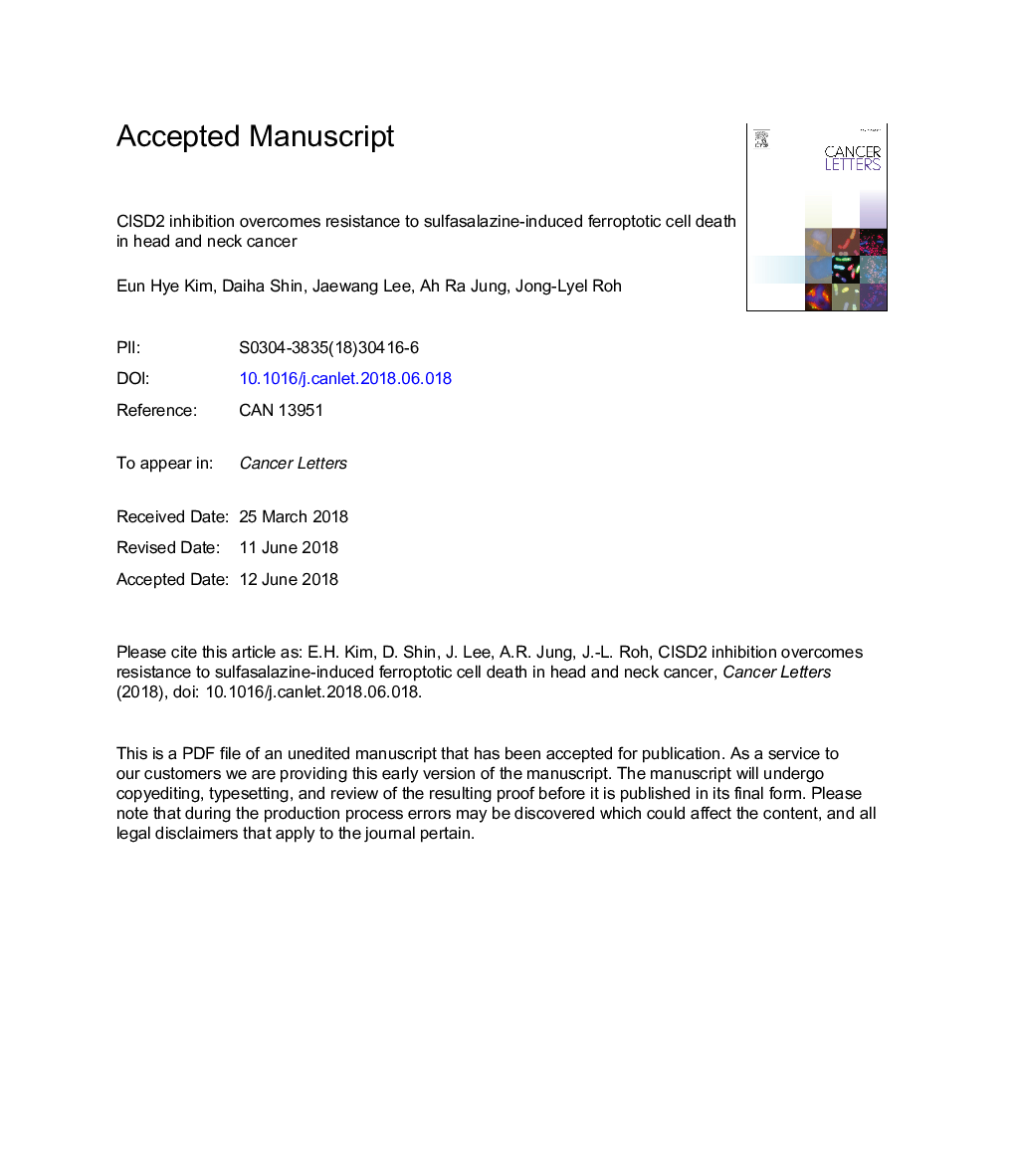| Article ID | Journal | Published Year | Pages | File Type |
|---|---|---|---|---|
| 8434251 | Cancer Letters | 2018 | 34 Pages |
Abstract
Sulfasalazine has been repurposed to induce ferroptotic cancer cell death via inhibition of xcâ-cystine/glutamate antiporter (xCT). However, cancer cells are capable of developing mechanisms to evade cell death. Therefore, we sought to determine the molecular mechanisms underlying resistance to sulfasalazine-induced ferroptosis in head and neck cancer (HNC). The effects of sulfasalazine and pioglitazone were tested in various HNC cell lines. The effects of these drugs and inhibition and overexpression of CISD2 gene were determined by evaluating viability, cell death, lipid ROS production, mitochondrial iron, and mouse tumor xenograft models. SAS induced ferroptotic cell death in HNC at different levels. CISD2 expression showed an association between its expression and ferroptosis resistance. CISD2 overexpression conferred resistance to ferroptosis by sulfasalazine. Silencing CISD2 gene rendered resistant HNC cells susceptible to sulfasalazine-induced ferroptosis, with increased levels of lipid ROS and mitochondrial ferrous iron. Pioglitazone induced over-accumulation of mitochondrial iron and ROS and sensitized resistant HNC cells to sulfasalazine treatment in vitro and in a mouse tumor-xenograft model. CISD2 inhibition overcomes HNC resistance to ferroptotic cell death induced by sulfasalazine via increased accumulation of mitochondrial ferrous iron and lipid ROS.
Keywords
nuclear receptor coactivator 4pGzCISDMDANCOA4GSHFTH1xCTGPx4SASHNCRPA3-(4,5-dimethylthiazol-2-yl)-2,5-diphenyltetrazolium bromideMTTshort interfering RNAROSsiRNAHead and neck cancersulfasalazineendoplasmic reticulumFerroptosismalondialdehydeCancer resistancePropidium iodideGlutathioneglutathione peroxidase 4PioglitazoneReactive oxygen species
Related Topics
Life Sciences
Biochemistry, Genetics and Molecular Biology
Cancer Research
Authors
Eun Hye Kim, Daiha Shin, Jaewang Lee, Ah Ra Jung, Jong-Lyel Roh,
